Exploring Degenesis Rebirth: Primal Punk
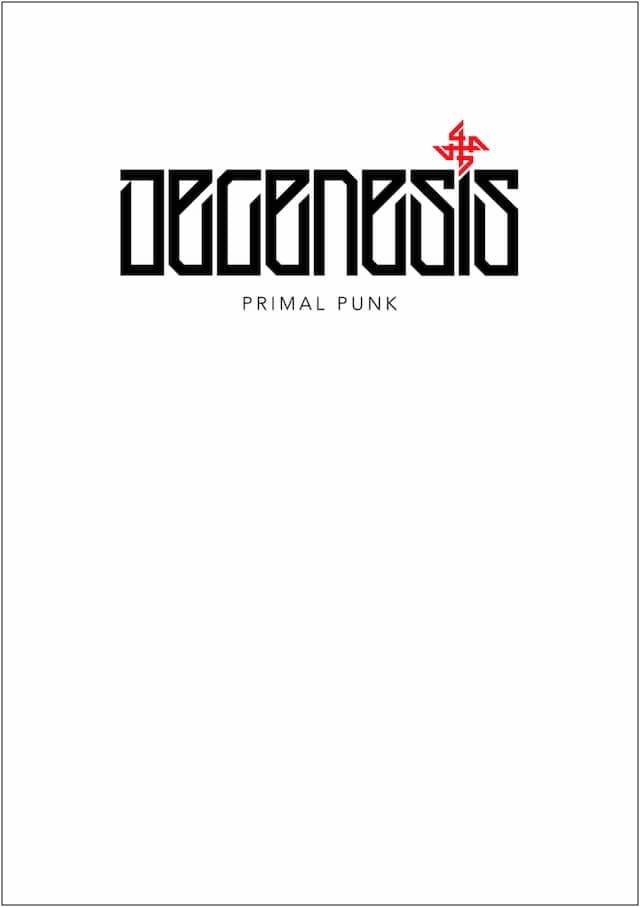
Degenesis Rebirth is an RPG that keeps calling me. It’s an ear worm of the imagination. The developer, SIXMOREVODKA, has launched a fabulous website that features an interactive map, timeline, stories, audio clips, and more. It is as rich and in-depth as the books themselves and also, like the digital copies of the game, all free. The world is so rich, in fact, that one struggles at times to deal with it all.
Degenesis Rebirth is a post post-apocalyptic game. In 2073, Earth was bombarded by a number of asteroids that was as close to an extinction event without quite doing the human species in. The people of this world call the event the Eshaton. For hundreds of years, humanity struggled with the new reality and sudden shifts in the world. The game focuses on Europe and North Africa, so we know that the plummet in temperatures set off another ice age. The drop in sea levels cut the Mediterranean off from the Atlantic. The Adriatic Sea between Italy and Croatia largely disappeared. The Sahara has bloomed with vegetation and life.
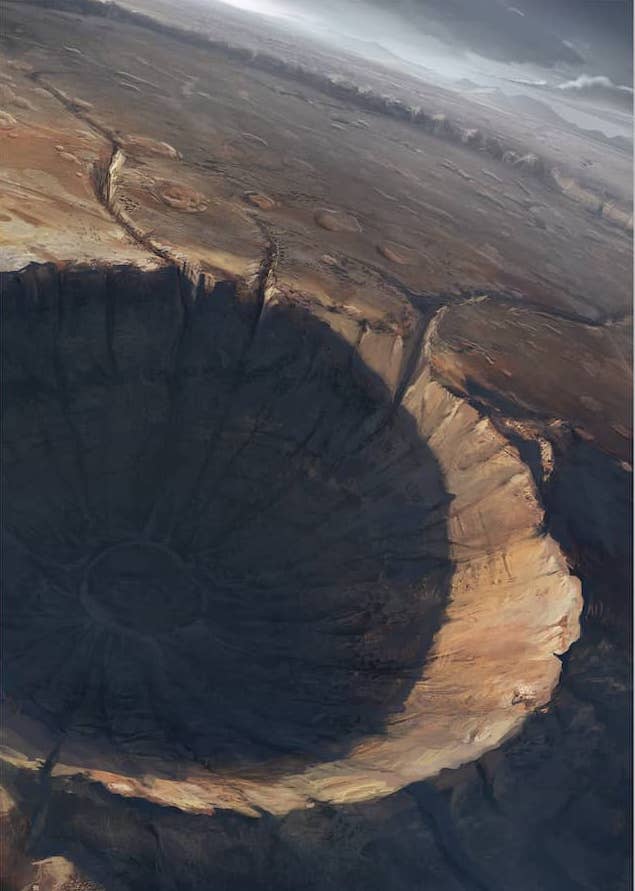
Ominously, the asteroids also carried something called the Primer. This alien substance acts like an infestation (called the Sepsis) rising up from the impact sites, transforming what it comes in contact with. In Europe, it has created alterations in humanity (called the Psychonauts) — beasts with various powers. Or it has altered insects and whole forests into dangerous oddities. In Africa, plant life become geometric and deadly. The Primer traveled down the Nile and Cairo and its environs are inaccessible to most of humanity.
Primal Punk, one of the two books in the core set, is the lore of the world. It provides significant context for the events. It’s 368 pages cover some pre-Eshaton events, post Eshaton events, the major Cultures (associated with geographical regions), and the Cults (the major factions in the game).
Okay. I’m going to pause here to note that Degenesis Rebirth is, as best as a I can tell, the most beautiful RPG book out there. I’ve not see a more cohesive and put together book in terms of art and layout. The art is magnificent. Only Free League Publishing’s art in Symbaroum, a fantasy RPG, comes as close to giving you a sense of the world. The art is consistent as well. It all has the same tone. (Symbaroum relies on the work on a single artist, Martin Grip. While Degenesis Rebirth is largely the work of Marko Djurdjevic, commissioned art is extremely high quality and conforms in look and feel to Marko’s work.)
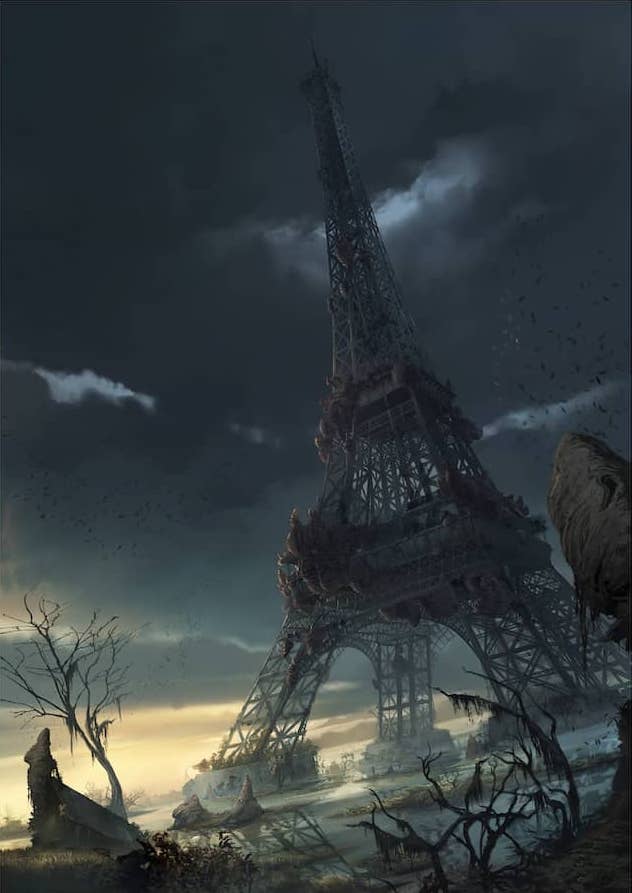
Every single page of Degenesis Rebirth is different — customized for the content on the page. At the same time, it retains a consistency. The core text is readable and consistent. The layout really plays with the background. Subtle to radical differences from page to page with a grunge background. Flipping through every book is a wonder.
The game does have a metaplot, but it is only glanced at in the book. Many clues and references are buried in the text. I have not worked it out myself, yet, and I suspect the books I have not gotten to — In Thy Blood, Killing Game, Black Atlantic, Justitian — contain more. That said, understanding the metaplot is inconsequential to being able to develop stories and play in the Degenesis universe.
Importantly, knowing all the lore and the history of the Cultures and Cults is unnecessary for enjoying playing in the game. The universe is so rich, so well-thought out, and so connected that only with enormous hours of time can one hope to be an “expert” in the game’s context. This should not be viewed as a negative… but as a positive, as a way to engage with the game and learn about the universe together. This is a game that seems to have a sweet spot of three to four players with a game master. Thus, you can start with but a few Cultures and a few Cults, expanding as necessary.
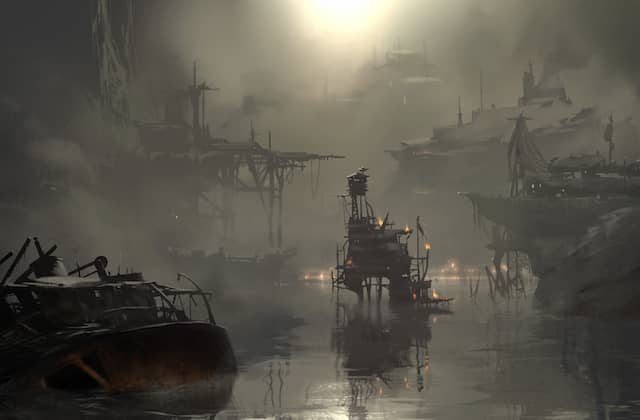
Both Cultures and Cults are key character decisions when players create their characters. It informs their backgrounds and affects their attributes and skills. For this article, I want to focus on the Cults. In Degenesis Rebirth, these serve as both factions and career paths. Primal Punk covers 13 Cults that span across the setting. From the religious Anabaptists and Jehammedans, to the militaristic Hellvetics and Scourgers, to the “ancient” knowledge possessors of the Chroniclers and Anubians, to the power brokers and mechants the Neolibyans, to the distinctive Spitalians, which factor into much of the advertising for the game.
In Primal Punk, each of the 13 Cults receives an extensive write up. A brief story that gives a bit of flavor, the Cult’s history — often attached to a founder or founding myth. Where the Cult is located or calls home. What it is like to be a member of the Cult, including how each rank fits into the overall structure.
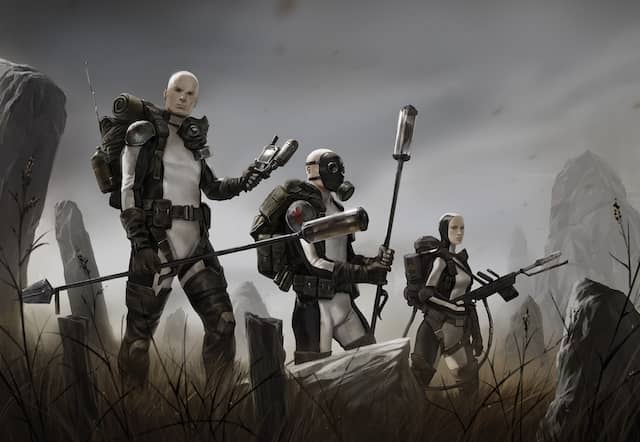
The Spitalians are one of the most visible Cults in the books and are featured in the theatrical trailers Six More Vodka released (youtu.be/0Tw3KaMr8wk and youtu.be/WTCARC91yyw). Dressed in a striking black and white uniform, they are the doctors, scientists, and often warriors of the world and intent on destroying the Sepsis and Psychonauts. They will strive to save and heal humanity, but they will not hesitate to kill everyone in an entire village infected with the Sepsis if necessary. They are headquartered in the Spital — immediately post-Eshaton it was called the Southern Ruhr Crisis Center — a vast complex that serves as a massive hospital, research station, and training grounds. The Spitalians joined the Justitian Protectorate, forging a pact with the Judges (another Cult). As part of the agreement, the Spitalians are allowed to hunt down Psychonauts in the borders of the Protectorate and kill them.
Many Spitalians carry a weapon called the splayer, which has a few variants. One of those includes an item called the mollusk floating in a water container, which is a cow’s muscle treated in a specific way. As the mollusk approaches an active Sepsis source — a Psychonaut or a person using a Sepsis-based drug called Burn — it pulses. The closer it is, the faster it pulses. For people entering the city of Justitian, they must pass by Spitalians carrying such splayers.
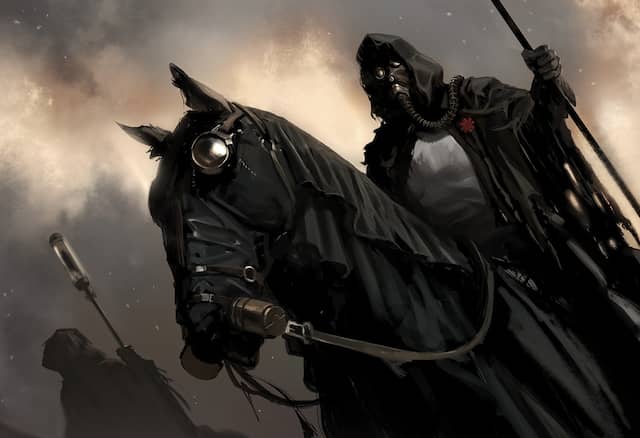
Ranks in the Cults are approached from two methods. The first is a narrative description of a person rising through through the ranks:
As a Recruit, the young Spitalian collects experience and learns to accept the ichor-suffused reality. The first step is easily taken, and he can soon call himself an Orderly. He is burdened with more responsibility that accompanies him until he starts studying medicine as a Famulancer. New perspectives arise: which departments is he interested in, what are his skills? While Famulancers walk the Spital’s chalked halls and discuss germ theory in an academic atmosphere with like-minded people, their honeymoon period is only brief.
They are allied with the Anabaptists, a religious based Cult, in their determination to save humanity from the Primer and its after effects.
The other is a systematic breakdown — every cult has their own ranks and pathways through those ranks.
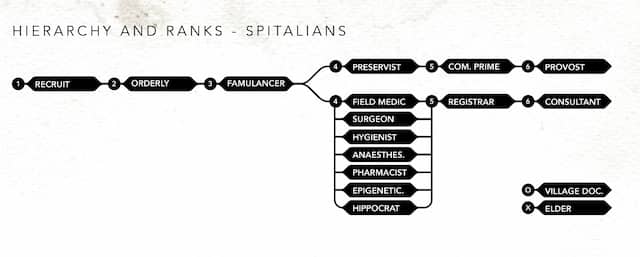
One of the more interesting ways of describing the Cults and framing them in the setting is the section called “Stereotypes.” These are written from the perspective of the Cult about all the other Cults. These are stereotypes, and the actuality will differ, but they help to give a general view of how the Cult feels about the other Cults. These also provide potential story ideas or give the GM potential background events.
The Spitalians are allied with the Anabaptists and Judges, but the stereotype description for each provides some insight.
“ANABAPTISTS — Though we share common goals, they are full of misconceptions. Nevertheless, we cannot afford to be too picky when it comes to our allies.”
“JUDGES — We’ve had our altercations. Once we have destroyed the Clans, we’ll see where we stand and what parts of our alliance we can transfer into peace times.l
The Chroniclers are another of the featured Cults in imagery for the game — that or they stand out with their masks. This Cult digs into the pre-Eshaton technology, particularly the Stream, which seems to have been the successor to the Internet. Their goal is to re-activate the Stream, and they spend much time digging into the data they have found, purchasing scrap found by scavengers. They, however, we’re long ago defeated by the Anabaptists. The lessen learned was that the Chroniclers needed to work behind the scenes and manipulate things to their advantage.
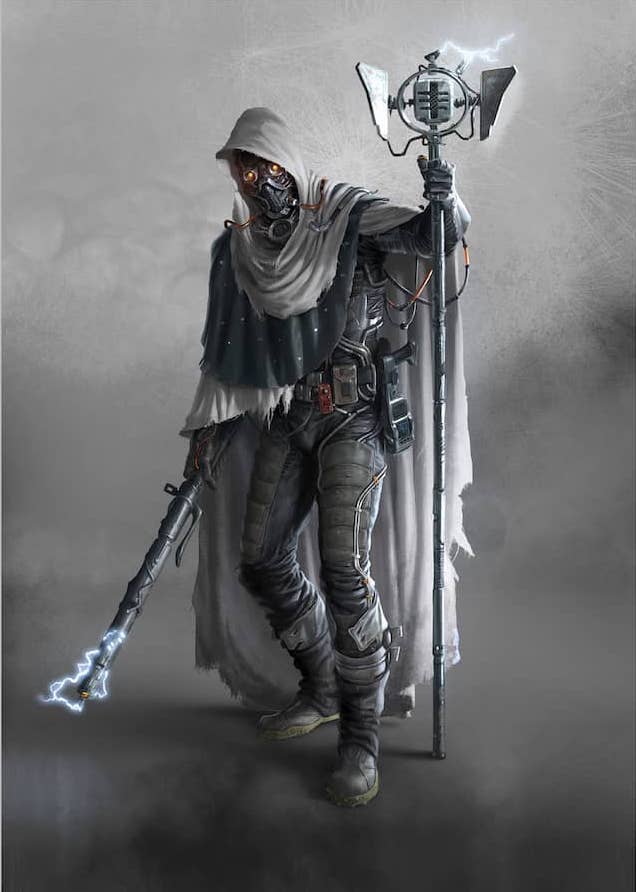
One of the key bits of text — and something that potentially links into the metaplot (or not) — is around “2 to the power of 16”:
The Eshaton destroyed the Stream’s physical component. But it had already stopped flowing shortly before and the Chroniclers do not know why. Was it an overload? Never. Massive node breakdown? Possible, but not probable. In the archives, there are reports on something called the ‘2 to the power of 16’ signature. It had flooded the Stream a few days before the Zero Event, and it had reached a critical mass only hours before the catastrophe, disrupting all digital communication. It is said that all computers broke down then under the pressure of the signature multiplying itself in fractal coils. Was it the condensed consciousness of an emerging artificial intelligence? Or an autoimmune reaction of the Stream to keep this intelligence from waking up?
For the stereotypes, the Chroniclers view the Spitalians as:
Fascist organization claiming to save the world. Primer threat recognized. Worthy of support. They give us time to re-activate the Stream.
Primal Punk dedicates pages to all 14 Cults. Snippets of information that forms a coherent, varied, in depth portrait of each to give players and GMs material for role-playing and interacting with members of the Cults, and dozens of hooks and plot elements. I have not seen a setting book with so many little hooks scattered everywhere. The description of the Cults alone would make this book one of the richest setting books around. But Primal Punk also covers the seven Cultures (vast regional areas) and history, including an extensive timeline.
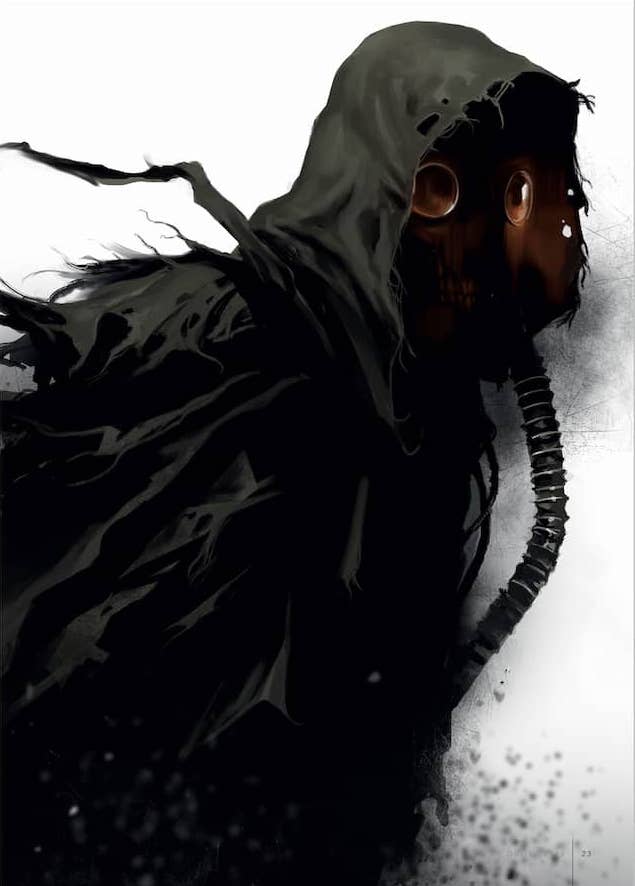
One of the most beautiful setting books around with an immense and wonderful setting. This book is worth every penny (a d the digital copy is free from degenesis.com or DriveThruRPG.com). This is a wonderful entry point to the world of Degenesis Rebirth, but players and GMs should not feel that they have to understand everything to start playing and enjoying. Focus on a Culture and a couple of Cults. The world will open up.
Patrick Kanouse encountered Traveller and Star Frontiers in the early 1980s, which he then subjected his brother to many games of. Outside of RPGs, he is a fiction writer, avid tabletop roleplaying game master, and new convert to war gaming. His last post for Black Gate was The Psionic Masters: The Zhodani in Traveller. You can follow him and his brother at Two Brothers Gaming as they play any number of RPGs. Twitter: @twobrothersgam8. Facebook: Two Brothers Gaming and Solo Twilight: 2000 game.
I agree on that. They aren’t cults in the sense most RPG gamers think of it. Faction with occupation is more appropriate. I assumed “Cult” was used to keep to Culture, Concept, Cult….
The artwork of this game has drawn me again and again, and I’ve never quite taken the plunge. I’ve always wondered if it would be like Kult — an astounding setting as much or more fun to read about than play in. I’ve noticed a number of the books are free to download on the website now, so maybe I need to quite putting this off.
Yeah–it’s all free digitally from their website. And they have tons of stories and great stuff on their website… put it off no more!